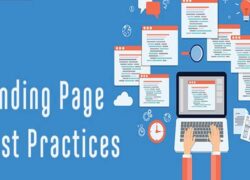In this era of technological advancement where all the competition is based on digital grounds, millions and trillions of websites are battling every second of a minute for users’ attention and approach. To conquest on these hard landscapes where the competition is on fire, one must be aware of the correct SEO (search engine optimization) strategies. This is paramount to succeed in today’s world of digitalization.
Nowadays, almost all sorts of businesses are running on digital platforms which require digital advertisements to excel their businesses. For this reason, it is necessary to rank the website among the top ones, so that it can become easily reachable by the targeted audience. Search Engine Optimization is the only way to boost organic traffic and visibility of a website. It is the only way to online triumph.
Among different parameters of search engine optimization, “the content” carries a huge part. Strong content, appropriately optimized for search engines is necessary to rank the website among the top ones. Content is an integral part of the introduction of a business as well as important for its promotion. One must be aware of all the essential ingredients mandatory to make a content search engine optimized. If you want to learn the principal skills and need to know all the key factors, then congratulations! You landed on the right spot. In this article, we are going to unveil all the information related to SEO-optimized content. Here you are going to find how to generate SEO-optimized content. And what essentials are demanded to make content SEO optimized?
First of all, give a quick look at the following list of all key parameters that create SEO-optimized content. Then we will discuss each of them briefly.
1- Keyword research
2- Keyword placement
3- Quality of the content
4- Original and un-plagiarized content
5- Title tags
6- Meta descriptions
7- URL structure
8- Header tags
9- Image optimization
10- Internal and external linking
11- Mobile friendliness
12- Social sharing
13- Regular updates
A brief explanation of the above-mentioned parameters is as follows:
1- Keyword research
It is the process of identifying and analysing specific words or phrases that people use while searching for some product, business, or information. Through keyword research, a website owner or marketer can understand the intent of the target audience and can realize word volume which is used in search bars by a bulk of people and has low competition.
After researching, certain words are gathered which are used by the audience. Such words are then used by the website owners in titles, Meta descriptions, tag headers, and in the overall text of their content. Its benefit is that that website will ultimately increase its visibility in search engines and attract a bulk of organic traffic.
There are several steps of keyword research. First and foremost, one should brainstorm potential keywords related to their industry and topic. Then with the help of keyword research tools collect data on search volume, competition, and relevant keywords. Following are some of the keyword research tools used for this purpose:
- Google keyword planner
- Ashrefs
- SEMrush
- Moz
While conducting keyword research one must stick to the relevance of keywords with the target audience. This will aid in aligning with users’ search queries and drive more traffic to their website, improving their search ranking and ultimately benefiting the business.
2- Keyword placement
It refers to the strategic fitting of keywords in the piece of content including blog posts, web pages, or online advertisement. This will cause optimization of the content and enhance its visibility in search engines. It is the concept of incorporating keywords in certain areas of content that stimulate search engines to identify them as relevant content.
Following are some of the key locations of keywords placement:
- Title tag
- Heading tags
- Body text
- Meta description
- URL structure
- Image Alt text
- Internal and external links
- Headers and bullet points
Focus on keyword placement in a natural and user-focused manner. Keep in mind the interest of the user and create engaging content that attracts a volume of target audience and fulfills all of their requirements.
3- Content quality
This is one of the crucial requirements of SEO-optimized content. When we are going to generate SEO-optimized content then our priorities should be to develop user engagement as well as search engine-appealing content. Quality of content is demonstrated by the presence of the following factors:
- Relevance
- Originality
- Depth and comprehensiveness
- Structure and reliability
- User Engagement
- Proper formatting
- Accuracy and reliability
- Keyword use and placement
- Mobile-friendliness
- External validation
Designation of high-quality content is time-consuming and requires a lot of effort too but is fruitful, providing long-lasting beneficial outcomes. It will optimize the website and boost organic traffic.
4- Original and un-plagiarized content
Search engines like Google favour original and un-plagiarized content. Copied content is usually ranked lower by search engines. Moreover, fresh content attracts the audience providing them with new ideas in a variety of styles. A unique perspective always entangles millions of minds. And such content has a higher likelihood to be shared among people on different social media platforms.
One of the major damages that plagiarism does to content is that it demolishes the credibility and reliability of a brand or website. On the hand original content builds trust, providing long-lasting positive consequences.
For SEO optimization it is crucial to do proper research and generate original content, free of plagiarism. Otherwise, it is not possible to boost visibility and organic traffic.
5- Title tags
They directly influence search engines and user click rates. Therefore, these are one of the key elements in SEO-optimized content. The following features of title tags should be fulfilled to construct SEO-optimized content.
- It should be concise with a recommended length of 50 to 60 characters.
- Must have keywords related to the business and audience search intend
- Emojis and symbols should not be used. Try to stick to alphabetical use only.
- A title tag should be un-plagiarized and unique to avoid any confusion by the search engines
- Adding the name of the brand is a plus point.
- Try to inculcate primary keywords and phrases at the beginning of the title tag. Avoid stuffing keywords.
- Ensure that the title tag looks natural and easy to understand.
6- Meta Description
These are compact summaries of web pages. Meta descriptions provide informative content regarding the web page. They are not a direct ranking factor but can impact click-through rates and user engagement.
Other than uniqueness, clarity, readability, and relevance which are usually common in all aspects of SEO-optimized content, the following are distinctive particles of Meta Description.
- The recommended length for Meta Description is 50 to 160 characters. It should not be long as there are chances of losing the informative structure of meta description.
- With the help of action verbs, the meta description should be created in such a way that invites users and compel them to click and take action.
- The meta description should be a display of what the content is about. The meta description should briefly clarify every aspect which is discussed in the content.
- While writing Meta descriptions, keep in mind that search engines dynamically generate t meta descriptions solely based on users’ queries. Therefore, it is required to write compelling meta descriptions, otherwise, search engines will not generate them.
7- URL structure
When it comes to optimizing URL structure, the following practices in this regard should be kept in mind:
- Keep URLs concise and descriptive
- Place keywords strategically, preferentially in the beginning
- Use hyphens to separate words
- Avoid unnecessary parameters such as session IDs or tracking codes
- Implement canonicalization
- Generate a logical hierarchy
8- Header tags
Header tags play a very important role in optimizing content for SEO. They help search engines recognize the structure and hierarchy of the content and make it easier for them to crawl and index pages of the content. Following are some of the beneficial guidelines to create header tags for SEO-optimized content:
- Sequentially use header tags
- Strategic use of keywords and key phrases in header tags
- Maintain consistency in the use of header tags throughout the content.
- Improve readability
- Use Cascading Style Sheets
- Develop equilibrium between SEO and user experience.
9- Optimization of image
It plays a pivotal part in developing SEO-optimized content. Enhancing the overall performance of a website potentially upgrades overall ranking for search engines. Some of the useful tips for image optimization are as follows
- By using file formats like JPG and JNG, compress images.
- Resize images to collaborate with the dimensions of the website.
- With the use of relevant keywords, create images related to the content. This will help search engines to identify.
- Provide textual descriptions of images with Alt tags.
- Provide images with appropriate captions.
- Make images and content adaptable to all sorts of devices and screens.
10- Internal and External linking
These are vital components of SEO-optimized content. A brief description of them is given as underneath:
Internal linking
It refers to linking one page of the website with another page of the website within the same domain. To do so one has to follow the following tips:
- Use descriptive anchor texts that demonstrate to users clearly what they are going to find by clicking on the link.
- Place internal links in the content where they make sense and look natural.
- Keep an eye on the working of internal links. Update them regularly.
- Link to pages that provide additional but relevant information regarding the topic you’re discussing.
External linking
It refers to linking websites with other authoritative and relevant websites. For external linking following significant parameters should be applied:
- For referencing and citing information reach to the reliable website. This will build the trust of search engines that information from an authoritative website is being quoted.
- When linking externally use relevant anchor texts.
- Engage with other website owners and build fruitful relationships with them.
- Continuously monitor and update external linking.
11- Mobile friendliness
With the increased use of mobiles, search engines prefer content that is mobile-friendly. The following key points should be kept in mind while generating mobile-friendliness SEO-optimized content.
- Responsive design
- Up to mobile page speed
- Installation of optimized images
- Provision of content that is easy to understand
- Application of URLs that are mobile-friendly
12- Social sharing and resonation
It is vital to boost traffic. The more the content resonates with the public, the more the possibility is for its visibility and elevation of ranking. For this purpose, the following tips are gathered as underneath:
- Use catchy headlines and descriptions
- Add a button within the content that highlights its function for social-sharing
- Produce content that is of high quality and audience-engaging
- Respond audience by answering their queries and by replying to their feedback.
13- Vigilance towards regular updates
Updating on a regular basis is a necessary portion of creating S.E.O optimized content It elevates back-linking opportunities and helps to learn and gain knowledge from other website holders. Search engines prefer fresh content and ideas; therefore, continuous monitoring will help in building strong SEO-optimized content. Moreover, this will enhance engagement with the audience and social sharing.
Conclusion:
SEO-optimized content is the need of modern times. Learning and understanding search engine optimization is the only way to excel in a digital world where all businesses are running online.




